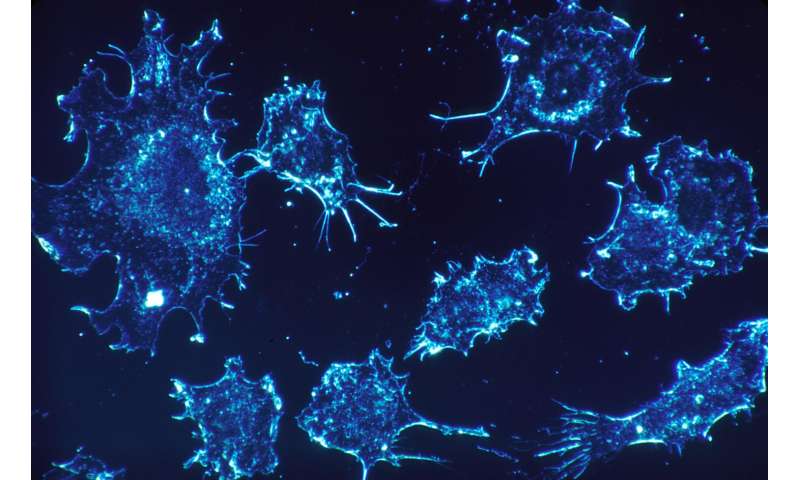
Our cells have several ways to repair DNA that breaks when the cells divide. However, genetic mutations can disable these DNA repair mechanisms, destabilize the cells, and trigger cancer. In a paper published today in the journal Nature, Yale Cancer Center (YCC) scientists have identified mutations in metabolite-producing genes as a disruption of DNA repair. These mutation-driven “oncometabolites” may make cells more prone to developing cancer—but also more vulnerable to new cancer treatment strategies.
“We’ve identified, in a novel way, how abnormal cell metabolism impacts DNA repair,” said Peter Glazer, M.D., Ph.D., chair of the Department of Therapeutic Radiology at Yale and Chief of Radiation Oncology at Smilow Cancer Hospital. In earlier research, scientists in Glazer’s laboratory identified opportunities to treat cancers triggered by oncometabolites with an existing class of drugs called PARP (poly ADP-ribose polymerase) inhibitors. These drugs are designed to kill cancer by entirely shutting down an important DNA repair process in cells. Several PARP inhibitors are approved for treating breast and ovarian cancers with BRCA mutations.
Several early clinical studies are testing PARP inhibitors against glioma and other cancers driven by mutations in a gene known as IDH (isocitrate dehydrogenase 1) that churn out huge amounts of a metabolite called 2HG. These trials are spearheaded by Ranjit Bindra, M.D., Ph.D., associate professor of therapeutic radiology at Yale.
“The question still remained as to why these oncometabolites caused a DNA repair defect and create a vulnerability to PARP inhibitors?” said Glazer. “Our latest paper answers that question, diving into how abnormal metabolism walks over to a seemingly unrelated area of the cell to impact DNA repair.”
To uncover the details on the mechanism that goes wrong, the Yale scientists examined how oncometabolites affect DNA repair signaling in dozens of types of human cancer cells.
Within cells, DNA is wrapped around proteins called histones in a package called chromatin, which opens for the DNA to do its work, Glazer explained. When the DNA is damaged in a given location, histones are tagged with “methyl group” molecules that give a signal to start DNA repair.
“Our fundamental finding was that these metabolites inhibit an enzyme called KDM4B that regulates the presence of methyl groups on the histones,” said Glazer. “The consequence is that there are way too many methyl groups on the histones. That floods the system, so that the damage is masked.”
Source: Read Full Article